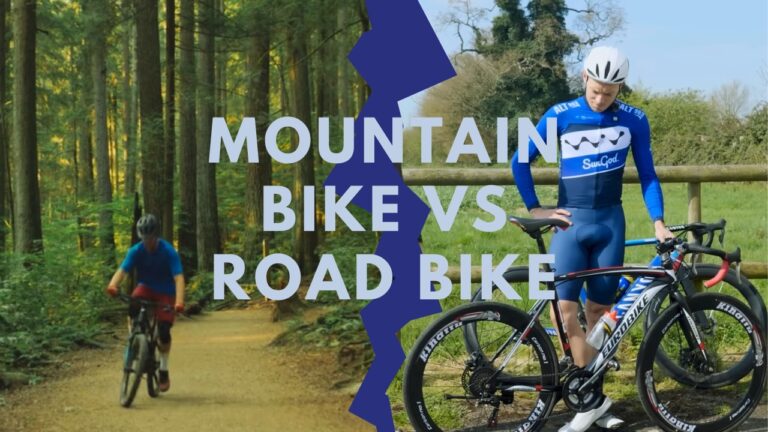When I first dipped my toes into the world of cycling, I was taken aback by its complexity. As a kid, biking to school was a simple affair. You had your essentials: two wheels, a handlebar, pedals, a chain, a seat, and of course, the all-important helmet (seriously, don’t skimp on this one).
So, imagine my surprise when I walked into a cycling store, ready to buy a bike, and was met with a question that left me stumped. The conversation went something like this: “Hi, I’d like to buy a bike,” I said. The guy at the store responded, “Sure, I can help. What sort of bike are you after, Mountain or Road?”
If you’re feeling as lost as I was back then, don’t worry. I’m here to shed some light on the different types, so you can focus on the other aspects of buying these. We also have detailed guides on other important features that you can check out here.
And yes, I can hear some of you shouting, “There are more types of bikes than just mountain and road!” I hear you, and I ask you to bear with me. In this article, I’m going to help you understand the differences between mountain and road variants.
By the way, did you know that you can convert your road bike into a mountain one if needed? Read our guide to learn how to do it and have two in one, without spending any money.
Bike Speed
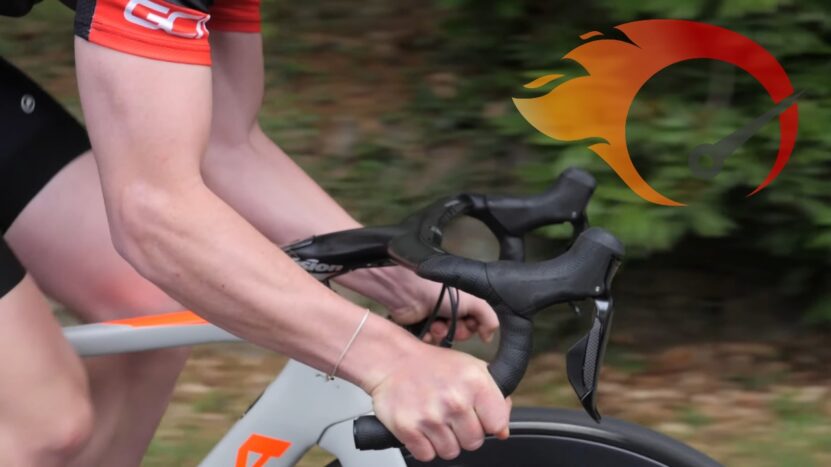
Let’s kick things off with bike speed. Now, if you’re imagining a mountain and a road bike in a head-to-head race on a flat, smooth road, the road bike is going to be the clear winner. Its design is optimized for speed on such surfaces.
If you throw in some rugged terrain, the mountain bike will shine. Its design is meant to handle the bumps and grinds of off-road trails. So, when we talk about speed, it’s crucial to consider the terrain.
On a side note, it’s also worth mentioning that the rider’s skill and fitness level can significantly affect the speed. A skilled and fit rider can make a mountain bike fly on a trail, just as they can make a road bike zip along the road.
Average Speed
When it comes to average speed, a road bike generally outperforms a mountain variant on pavement. This is because it has less rolling resistance, thanks to its narrow, smooth tires and lightweight frame. On a flat and smooth surface, a road bike can average a speed of 20-25 miles per hour.
On the other hand, a mountain bike, with its wider, knobbier tires and heavier frame, averages 10-15 miles per hour on the same surface. But remember, this is on a smooth and flat surface. Once you hit the trails, the mountain bike’s design features come into play, providing more traction and control, which can help maintain speed on uneven terrain.
Max Speed
When we talk about max speed, road bikes again have the upper hand on smooth surfaces. Thanks to their aerodynamic design and lightweight frames, road bikes can reach speeds of up to 40 miles per hour. In contrast, a mountain bike, with its heavier and less aerodynamic design, will struggle to reach 30 miles per hour on the same surface.
When the terrain gets rough and steep, a mountain bike can reach thrilling downhill speeds that a road bike wouldn’t dare to attempt. This is where the mountain bike’s design shines, as its wider tires and suspension system provide the necessary control and stability for high-speed descents.
Why Are Mountain Variants Slower
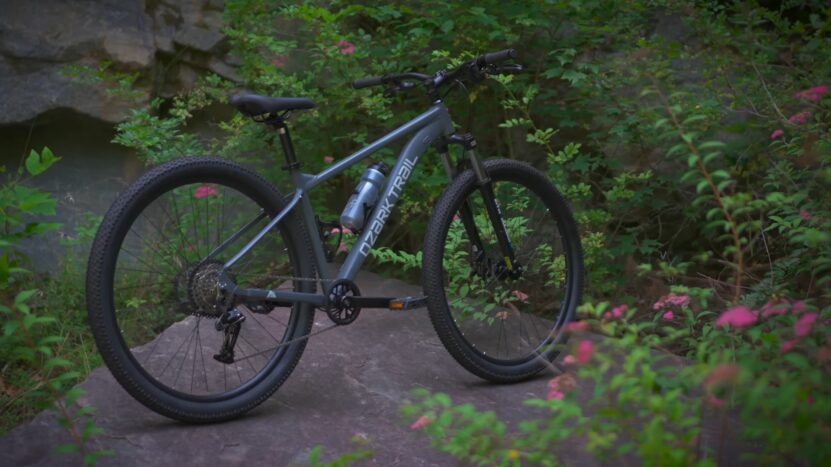
Mountain bikes are slower than road bikes on smooth surfaces due to their design and purpose. They are built for off-road use, with wider, knobbier tires for better traction, a heavier frame for durability, and a more upright riding position for better control.
These features, while great for off-road riding, create more rolling resistance and drag, slowing the bike down on smooth surfaces.
These same features that slow a mountain bike down on the road make it faster and safer on rough terrain. The wider tires provide better traction on loose surfaces, the heavier frame can withstand the bumps and jumps of off-road riding, and the upright riding position gives the rider better control.
What Speeds Can You Achieve Downhill?
Downhill speeds are where things get interesting. A road bike can hit high speeds on a smooth, steep downhill, potentially reaching over 50 miles per hour. This is thanks to its lightweight, aerodynamic design, and smooth, narrow tires. On a rough, steep downhill, a road bike would struggle due to its lack of traction and control.
On the other hand, a mountain bike can hit high speeds on a rough, steep downhill, where this one would potentially falter. The exact speed will depend on the rider’s skill and the specific conditions of the trail, but it’s not uncommon for skilled riders to reach speeds of over 30 miles per hour on technical downhill sections.
This is where the mountain bike’s wider tires, suspension system, and more robust frame come into play, providing the necessary control and stability for high-speed descents.
How To Increase Mountain Bike Speed
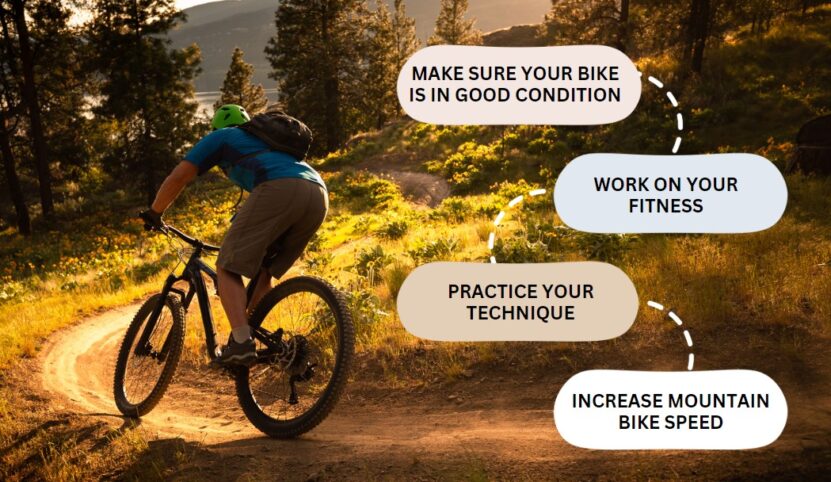
If you’re looking to increase your speed, there are several strategies you can employ.
- First and foremost, make sure it is in good condition. A well-maintained bike is a fast one. Regularly check your tire pressure, keep your chain clean and lubricated, and ensure your brakes are working properly.
- Second, work on your fitness. Cycling is a physical activity, and the stronger and fitter you are, the faster you’ll be able to ride. Incorporate strength training and cardio into your fitness routine, and consider working with a coach or following a training plan to maximize your performance.
- Third, practice your technique. Good cycling technique can make a big difference in your speed. This includes everything from your pedaling technique to your body position on the bike. Consider taking a cycling class or hiring a coach to help improve your technique.
Discover valuable insights on selecting the ideal footwear for your cycling experience.
Mountain Bike Speed On Different Terrains
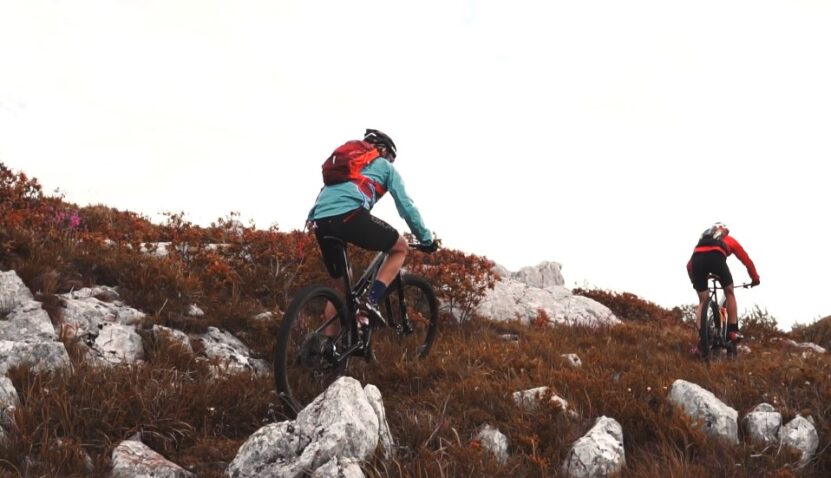
When it comes to mountain biking, the terrain plays a significant role in determining your speed. Let’s take a closer look at how different terrains can affect your ride.
Flat and Smooth Trails
We have already covered flat and smooth terrains briefly, such as a well-maintained gravel path or a fire road, but a mountain bike can maintain a decent speed. The wide, knobby tires provide good traction, and the bike’s sturdy construction can handle the minor bumps and dips that might be present.
You can expect to maintain an average speed of around 10-15 miles per hour on this type of terrain, depending on your fitness level and the exact conditions of the trail.
Rough and Rocky Trails
When the trail gets rough and rocky, the mountain bike really shines. The wide tires and suspension system provide the necessary control and stability to navigate over rocks and roots, and the sturdy frame can withstand the bumps and jumps that come with this type of terrain.
The rough terrain also means slower speeds. On a technical singletrack trail with lots of rocks and roots, you might average around 6-10 miles per hour, depending on the trail’s difficulty and your skill level.
Does Suspension Affect Speed?

Lastly, how does suspension affects speed. Mountain bikes often have suspension to absorb shocks and bumps, which is great for off-road riding. This can slow you down on smooth surfaces because some of the energy that could be used for forward motion is absorbed by the suspension. This is known as suspension bob.
Coversly, these typically don’t have suspension, which makes them faster on smooth surfaces but less comfortable on rough ones. The lack of suspension means that more of the energy from your pedaling goes directly into forward motion, but it also means that you’ll feel more of the bumps and vibrations from the road.
FAQ
Is it the design of the bike or the terrain that primarily determines speed?
Both factors play a crucial role. A bike’s design determines its suitability for specific terrains, and the terrain affects how fast a bike can travel. Road bikes are designed for paved surfaces, while mountain bikes are optimized for off-road trails.
Can I use a road bike on mountain trails?
It’s not advisable. Road bikes aren’t designed to handle the challenges of rugged terrains, and using one on mountain trails can lead to accidents, damage, and decreased control.
Do mountain bikes always have a slower average speed than road bikes?
On paved roads, mountain bikes generally have a slower average speed than road bikes. However, on rugged trails, mountain bikes will be faster and more efficient than road bikes.
How does rider posture affect speed on both bike types?
Road bikes promote a forward-leaning, aerodynamic posture that reduces wind resistance, making it more efficient on roads. Mountain bikes have a more upright riding position, offering better visibility and control on trails but reducing aerodynamic efficiency on roads.

Can changing the gear ratios on my mountain bike make it as fast as a road bike on paved roads?
Answer: While adjusting gear ratios can improve a mountain bike’s speed on roads, other factors like tire width, tread, weight, and riding posture will still make road bikes generally faster on paved surfaces.
Which bike should I choose if I want a mix of road and off-road riding?
Answer: If you’re looking for versatility, consider a hybrid bike or a gravel bike. These are designed to perform reasonably well on both paved roads and moderate off-road trails.
The Bottom Line
From that day in the cycling store, feeling lost and overwhelmed by the question, ‘Mountain or Road?’, I’ve come a long way. And I hope that this journey through the world of cycling has helped you too.
Remember, it’s not just about speed—it’s about where you’re riding and how you want to ride. Each bike, whether it’s a mountain or a road variant, offers a unique experience tailored to its environment.
So, think back to your own ‘Mountain or Road?’ moment and choose your bike based on your riding preferences. Keep it well-maintained, work on your fitness and technique, and most importantly, enjoy the ride. After all, every cycling journey begins with a single pedal stroke. Happy cycling!

